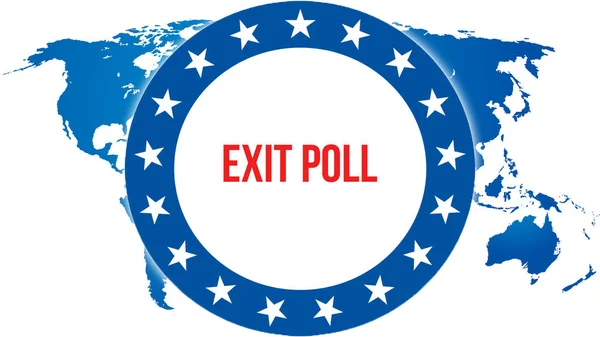How Reliable Are Exit Polls?
Exit polls, a common component of election coverage, are surveys conducted as voters leave polling stations to gain a preliminary insight into the probable outcome. However, their reliability has often been called into question due to several factors. One of the primary issues is the margin of error that naturally accompanies any type of poll. Depending on the size of the sample taken, the margin can be significant, leading to discrepancies between the predicted and actual results.
Moreover, exit polls are subject to various types of bias. For example, some voters may refuse to participate, or may not accurately report their votes due to privacy concerns. Also, the timing of the poll can impact the results; those who vote later in the day may have different demographics or political leanings compared to early voters.
Furthermore, voting methods have evolved, with an increasing number of people opting for postal voting or early voting, which are not captured in exit polls. Lastly, the methodology used to conduct exit polls, including the selection and weighting of respondents, can greatly influence the results. This was evident in the 2004 U.S. Presidential Election when early exit polls inaccurately predicted a win for John Kerry. Therefore, while exit polls can provide interesting insights, they should be viewed with a degree of skepticism due to these potential sources of error and bias.

Understanding the Methodology Behind Exit Polls
Exit polls, a common practice during elections, are a type of survey conducted immediately after voters cast their ballots. The methodology behind these polls is intended to predict and understand the outcome of an election before the official results are announced. To carry out an exit poll, a sample of voters is chosen at random from different polling stations. These voters are asked about their vote choice and their responses to various issues. The data collected is then analyzed, often using complex mathematical and statistical models, to make projections about the overall voting results.
The selection of voters in an exit poll is a critical part of the process. To ensure the accuracy of the poll, the sample must be representative of the entire voting population. This is done by selecting polling stations and voters within those stations randomly. In addition to this, the size of the sample plays a significant role in determining the accuracy of the results. The larger the sample size, the lower the margin of error, leading to more reliable forecasts.
Nevertheless, exit polls are not always accurate and can sometimes lead to controversial results. This can be due to various factors, including the reluctance of some voters to disclose their vote, biased sample selection, and incorrect response interpretation. Hence, while exit polls provide a valuable early insight into the possible outcomes of an election, they should not be viewed as definitive results. Instead, they should be seen as tools for understanding voting trends and patterns, which can be instrumental in shaping future political strategies.
Furthermore, the methodology used in exit polls is continuously evolving with advancements in technology and data analysis techniques. This evolution aims to improve the accuracy and reliability of exit polls, making them an even more valuable tool in the democratic process. Thus, understanding the methodology behind exit polls is crucial for both political analysts and the general public.
Historical Accuracy of Exit Polls in Past Elections
Exit polls have been a mainstay in the electoral process for decades, providing an early glimpse into the potential outcomes of an election before the final results are officially tallied. Their historical accuracy, however, has been a subject of contention among political analysts, statisticians, and the general public. It is pivotal to remember that exit polls are essentially a form of survey, and, like all surveys, they are subject to sampling errors and biases. Consequently, their precision can vary widely across different elections and regions.
In the United States, for instance, exit polls in the 2000 presidential election inaccurately projected Al Gore as the winner, while the actual result was in favor of George W. Bush. Similarly, in the United Kingdom, exit polls in the 1992 general election incorrectly predicted a hung parliament, but the final outcome was a Conservative majority.
Contrastingly, exit polls have also demonstrated remarkable accuracy in certain instances. During the 2008 and 2012 U.S. presidential elections, exit polls correctly predicted Barack Obama’s victory. In India’s 2014 general elections, exit polls accurately forecasted a historic win for the Bharatiya Janata Party.
Analysts often attribute the discrepancies in the accuracy of exit polls to several factors, including the quality of the poll design, the representativeness of the sample, voter honesty, and the timing of the poll. For instance, late-deciding voters who cast their ballots close to the end of the polling period are less likely to be included in exit polls, which could skew the results.
Given these complexities, while exit polls can provide valuable insights and generate exciting election night narratives, they should be interpreted with caution. They are not infallible indicators of the final election outcome, but rather a snapshot of voters’ preferences at a particular point in time. Their historical accuracy serves as a testament to their potential utility and their limitations.

Factors That Can Influence Exit Poll Results
Exit polls are fundamental tools that provide insights into voter tendencies and preferences in an election, but they can be influenced by a variety of factors. One primary factor is respondent bias, where voters may not reveal their true voting decision due to fear of judgment, social desirability, or personal reasons. Sampling error can also impact exit poll results. If the sample of voters taken does not accurately represent the overall population, then the results could be skewed.
Similarly, the timing of the poll can sway results. If polls are conducted early, they may miss late-deciding voters, and vice versa. The location of the polling station can also influence results. Some areas may have higher concentrations of certain demographics, which can lead to an oversampling or undersampling of particular groups. Furthermore, the mode of voting plays a role. Exit polls usually target in-person voters, leaving out a significant portion of voters who opt for absentee or mail-in ballots, potentially skewing the results.
The questionnaire design, including the wording and order of questions, can also impact how respondents answer. Lastly, the interpretation of exit poll data can be subjective. Different analysts may draw different conclusions from the same data set, depending on their understanding or preconceived notions. Therefore, while exit polls can give a useful snapshot of voter behavior, they should be interpreted with caution due to these influencing factors.
Comparing Exit Polls to Final Election Outcomes
Exit polls and final election outcomes often serve as two critical components in understanding the dynamics of an election process. Exit polls represent a sample of voter sentiment taken immediately after they’ve cast their ballots, providing early indications of which way the election might swing. They are usually conducted by media outlets or research organizations and can often be remarkably accurate. However, they are only surveys, meaning they are subject to sampling errors, nonresponse bias, and the potential influence of last-minute voters.
On the other hand, the final election outcomes are the definitive results, reflecting the collective decision of the electorate. These results are often influenced by numerous factors, including voter turnout, the effectiveness of candidates’ campaigns, and prevailing socio-political attitudes. The final election outcomes are the ultimate yardstick, the official and final verdict of an election.
Comparing exit polls with final election outcomes can provide fascinating insights into the accuracy of these polls and the factors influencing voter decisions. In some cases, they align closely, suggesting that the exit polls managed to capture the critical trends and voter preferences accurately. However, discrepancies can and do occur, pointing to potential limitations in the exit poll methodology, or unpredictable shifts in voter behavior.
Such differences can also highlight the impact of voters who make up their minds at the last minute, or who were unwilling or unable to participate in the exit polls. Even more, comparing these two can help us understand the nuances of the democratic process, the changing patterns of voter behavior, and the strengths and weaknesses of different polling methods. Therefore, while exit polls offer a glimpse into the possible results, the final election outcomes serve as the concluding statement in the electoral process, offering a concrete depiction of the electorate’s will.

Public Perception and Trust in Exit Polls
Public perception and trust in exit polls are vital components in the democratic process, influencing how people perceive the fairness and integrity of elections. These polls, conducted immediately after voters leave their polling stations, aim to predict the outcome of an election before official results are announced. They can serve as a significant check on the official results, helping to identify discrepancies that may indicate issues in the voting process.
However, the degree of public trust in these polls varies considerably. The accuracy of exit polls is heavily reliant on the methodology used, including sample size, question wording, and the timing of the interviews. If any of these factors are compromised, it can lead to inaccurate results, potentially undermining public confidence in the process. Furthermore, the media’s role in reporting exit poll results can also impact public trust. If the media sensationalize or misinterpret the data, it can further erode public trust.
Therefore, for exit polls to be effective, they must be conducted and reported with the utmost rigor and transparency. In an era of increasing skepticism towards institutions, maintaining public trust in exit polls is crucial for upholding the democratic process. It is essential for polling organizations and media outlets to be transparent about their methodologies, avoid premature predictions, and handle the data responsibly. As such, public faith and confidence in exit polls are not just about the numbers. It’s about the processes that underpin them, the professionalism with which they’re conducted, and the integrity with which they’re reported.
